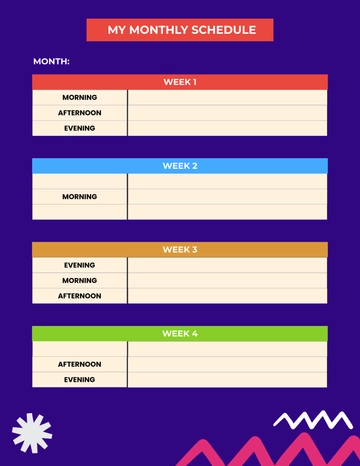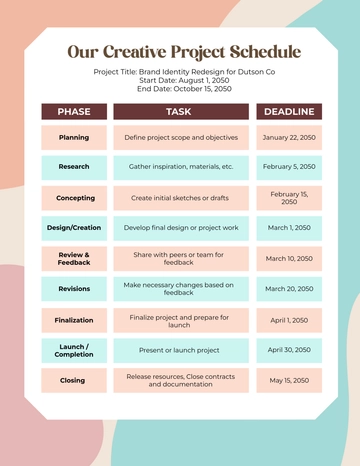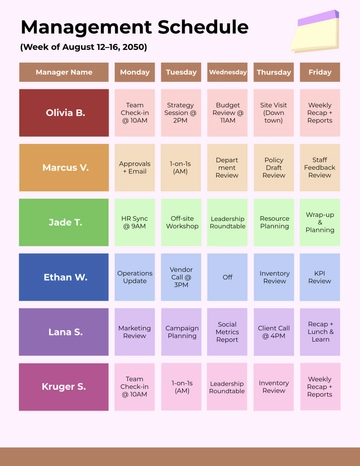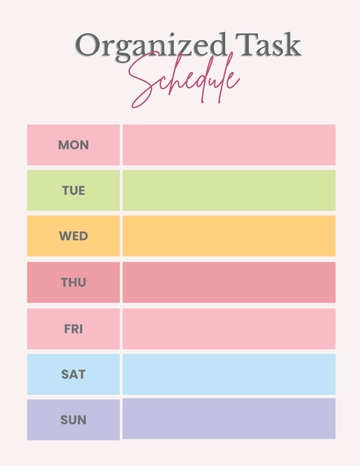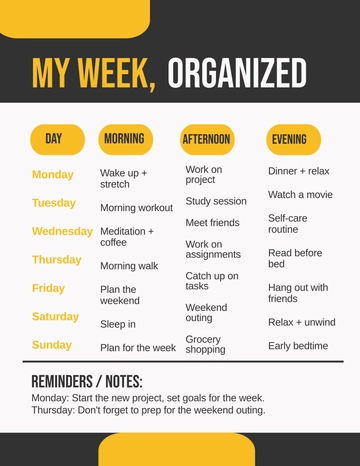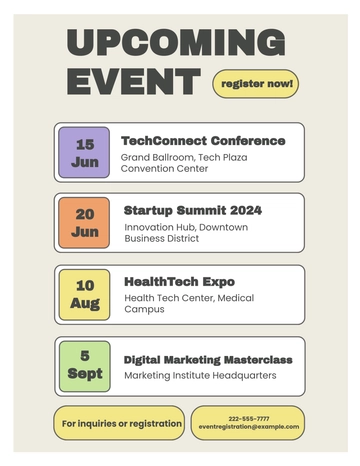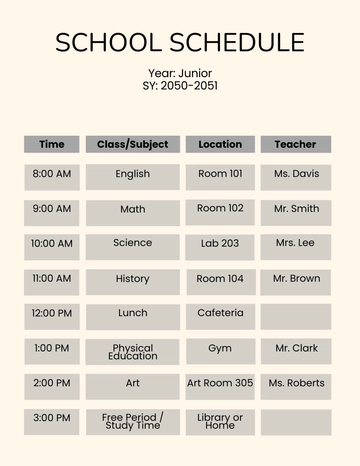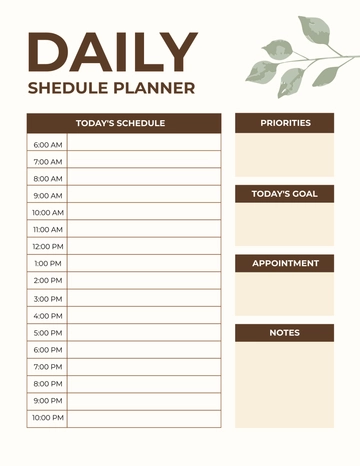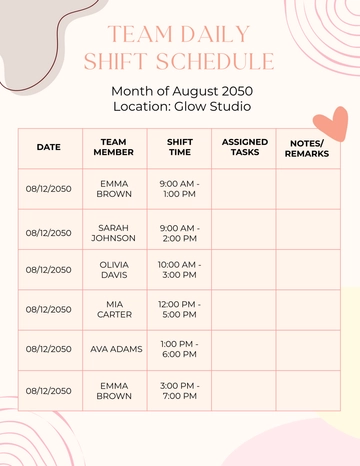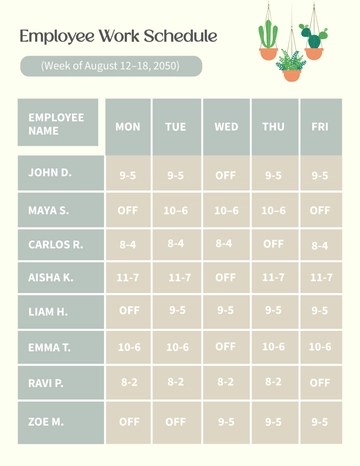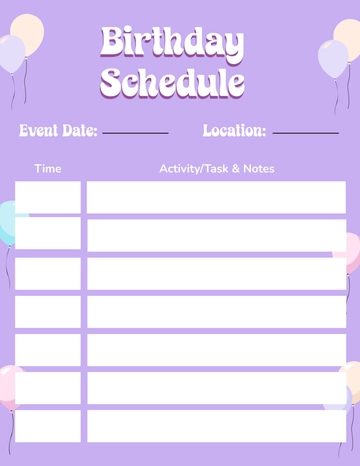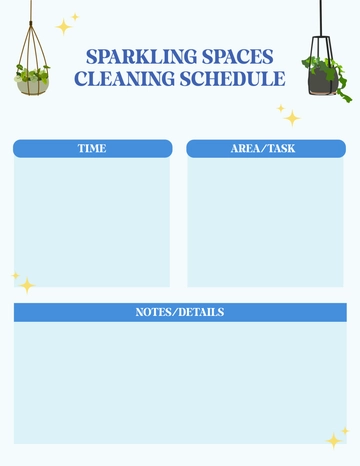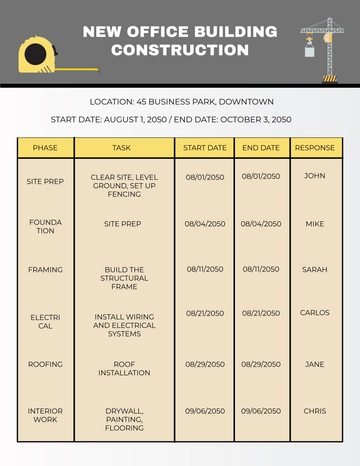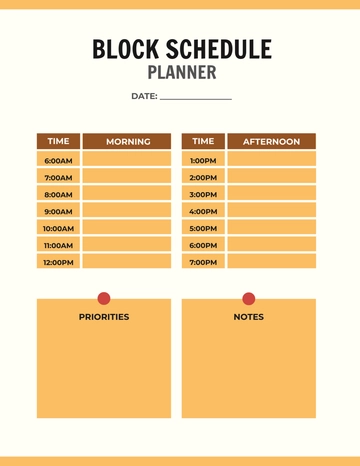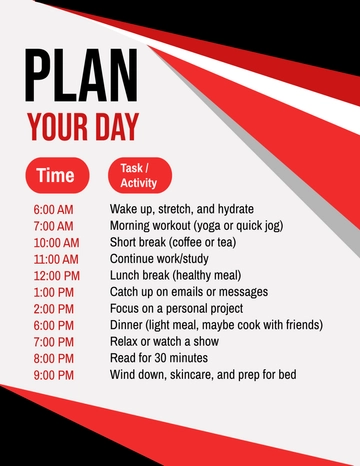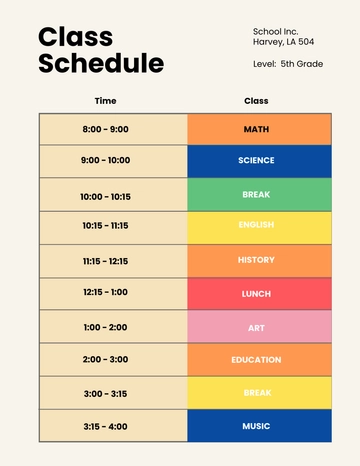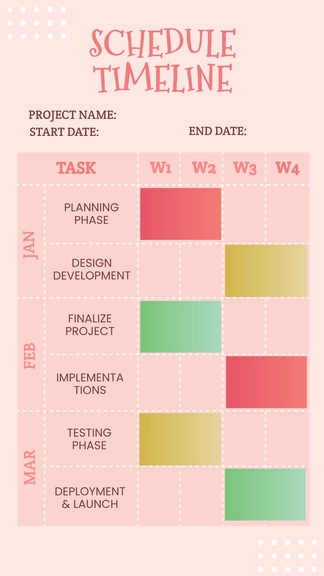Free Onboarding Schedule & Timeline Document HR
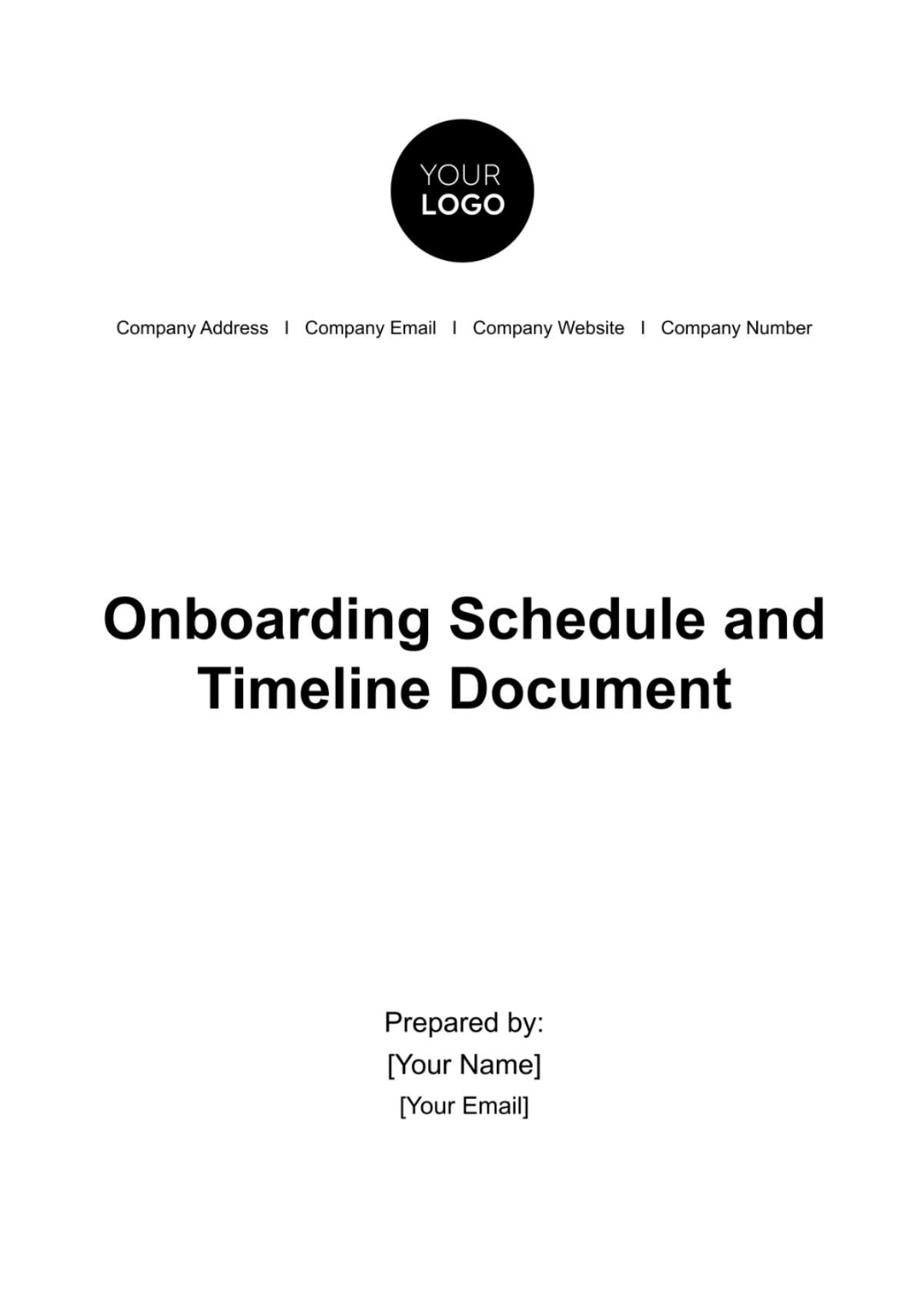
TABLE OF CONTENTS
I. INTRODUCTION TO ONBOARDING ...........................................................................3
II. PREPARATION BEFORE YOUR FIRST DAY ...............................................................4
III. WEEK 1: ORIENTATION AND COMPANY INTRODUCTION ....................................4
IV. WEEK 2: ROLE-SPECIFIC TRAINING AND ON-THE-JOB LEARNING ...................5
V. MONTH 1: SKILL DEVELOPMENT AND INTEGRATION ...........................................6
VI. MONTHS 2-3: PERFORMANCE AND GOAL SETTING ...........................................7
VII. ONGOING ONBOARDING: CONTINUOUS LEARNING AND GROWTH ................7
VIII. COMPLIANCE AND SAFETY TRAINING ................................................................8
IX. DIVERSITY AND INCLUSION TRAINING .................................................................9
X. CONCLUSION ...........................................................................................................10
Document Version: 1.0
Welcome to the Comprehensive Onboarding Schedule and Timeline, a resource designed to ensure a smooth and effective onboarding process for new employees at [Company Name]. This document outlines the essential steps and activities to be completed during the onboarding period. We are committed to helping you integrate seamlessly into our organization.
INTRODUCTION TO ONBOARDING
Importance of Onboarding
Effective onboarding plays a pivotal role in your journey with [Company Name]. It goes beyond a simple orientation; it's your induction into our culture, values, and mission. We believe that a well-executed onboarding process sets the stage for a fruitful and engaging career.
During your onboarding, you'll gain a deep understanding of our company's DNA, which includes not just what we do, but why we do it. This knowledge will help you align your role and aspirations with our overarching goals. Furthermore, onboarding ensures that you are aware of our expectations and policies, empowering you to thrive in a supportive work environment.
But perhaps most importantly, onboarding is about building relationships. You'll have the opportunity to connect with colleagues, managers, and mentors who will guide and support you throughout your time here. These relationships can be instrumental in your growth and development at [Company Name].
Overview of the Onboarding Process
Your onboarding journey is a well-structured process designed to ensure your success and integration into our company. It's divided into several phases, each with its unique focus and objectives. Here's a brief overview:
Preparation Before Your First Day: Prior to your start date, there are some administrative tasks to complete, such as paperwork and setting up your workspace. This stage ensures that you have all the tools and information you need to hit the ground running.
Week 1: Orientation and Company Introduction: Your first week will be a mix of introductions, culture immersion, and basic training. It's all about getting to know our company's history, values, policies, and the people you'll be working with.
Week 2: Role-Specific Training and On-the-Job Learning: The second week delves into the specifics of your role. You'll receive hands-on training and have the opportunity to shadow your colleagues, gaining practical experience.
Month 1: Skill Development and Integration: Beyond your role, we'll focus on your professional growth. Expect workshops, mentorship, and integration into projects and teams.
Months 2-3: Performance and Goal Setting: In your second and third months, we'll work together to define your performance goals and chart your path for success.
Ongoing Onboarding: Continuous Learning and Growth: Your journey doesn't end after the initial onboarding period. It continues with quarterly reviews, access to learning resources, and involvement in Employee Resource Groups (ERGs).
PREPARATION BEFORE YOUR FIRST DAY
Complete Pre-Employment Paperwork
Before your first day at [Company Name], there are a few administrative tasks to take care of. These tasks include completing necessary pre-employment paperwork such as tax forms, employment agreements, and direct deposit details. Our HR department will guide you through the process and provide the required forms. Please ensure that all documents are submitted before your start date to facilitate a smooth transition into your new role.
Setup Your Workspace
We want you to feel comfortable and prepared from day one. To achieve this, we recommend coordinating with your supervisor or team to arrange your workspace. This includes setting up your computer, configuring software and email accounts, and ensuring you have access to any tools or equipment essential for your role. If you have specific preferences or requirements, please communicate them with your team or the IT department well in advance.
Familiarize Yourself with Company Policies
To ensure a seamless integration into our company culture, it's essential to become acquainted with our policies and guidelines. You will receive access to our comprehensive Employee Handbook, which contains detailed information about our company policies, procedures, and the code of conduct. We encourage you to review this document thoroughly before your first day to understand our expectations and standards. Familiarity with our policies will help you make informed decisions and navigate your work environment effectively.
WEEK 1: ORIENTATION AND COMPANY INTRODUCTION
The table below discusses the activities that will happen during this particular week.
ACTIVITY | DESCRIPTION |
Day 1: Welcome and Introduction | Your first day at [Company Name] is an exciting beginning to your journey. You will receive a warm welcome from our team and be introduced to your coworkers. We will provide you with a company overview and orientation packet to help you get started. Don't hesitate to ask questions or seek guidance; we are here to assist you in any way we can. |
Day 2: Company History and Culture | Understanding our company's history, mission, values, and culture is fundamental to feeling like a part of our family. On this day, you'll delve into our rich history, learning how we've evolved and the impact we've made. Discover our mission and values, which guide our everyday actions, and explore the unique aspects of our culture that set us apart from the rest. |
Day 3: Team and Department Introduction | You'll be introduced to your immediate team members, learning about their roles and responsibilities. We encourage open communication and collaboration, so feel free to share your background and expertise. Understanding your team's dynamics is essential for effective teamwork and ensuring you feel comfortable in your new work environment. |
Day 4: HR Policies and Compliance | Our HR team will walk you through essential HR policies and procedures, ensuring you are well informed about your rights and responsibilities as an employee. Topics covered may include benefits enrollment, paid time off policies, equal opportunity employment, and workplace safety. Compliance with these policies is crucial for a harmonious and productive work environment. |
WEEK 2: ROLE-SPECIFIC TRAINING AND ON-THE-JOB LEARNING
Days 6-10: Role-Specific Training
With a foundational understanding of our company, culture, and essential systems in place, you'll now delve into role-specific training. Your training plan will be tailored to your position, covering the specific skills, knowledge, and competencies required for success. These training sessions may include workshops, online courses, and hands-on exercises.
Meet Your Team and Supervisor
Building strong relationships within your team is essential for collaboration and mutual support. During this week, you'll have the opportunity to connect with your team members on a deeper level. Your supervisor will provide guidance, outlining your goals and expectations in your role. Open lines of communication are encouraged, allowing you to seek clarification and offer input.
Shadowing and On-the-Job Learning
Putting theory into practice is an essential part of your onboarding journey. You will engage in shadowing opportunities, where you'll observe experienced colleagues in action. This hands-on approach will allow you to gain real-world insights and gradually take on more responsibilities. By learning on the job, you'll contribute to our projects and initiatives and become an integral part of your team's success.
MONTH 1: SKILL DEVELOPMENT AND INTEGRATION
Days 11-20: Skill Enhancement Workshops
In this phase of your onboarding, you will delve deeper into skill enhancement workshops tailored to your role. These workshops are designed to help you hone the specific skills required to excel in your position. Topics may include advanced software training, industry-specific best practices, and effective communication strategies. You will have the opportunity to interact with subject matter experts and engage in hands-on exercises to apply your newfound knowledge.
Ongoing Mentorship and Feedback
Throughout your first month, you will be paired with a mentor, and an experienced colleague who will guide you in navigating the intricacies of your role and the company culture. Your mentor will provide you with insights, answer questions, and share valuable advice to accelerate your integration. Regular feedback sessions with your mentor and supervisor will occur to assess your progress and address any concerns promptly. These interactions are essential for your growth and comfort within the organization.
Integration into Projects and Teams
As you continue to develop your skills, you will increasingly become an active participant in company projects and teams. Your contributions will not only expand your knowledge but also play a crucial role in advancing the organization's goals. Collaborating with colleagues from different departments and backgrounds will expose you to diverse perspectives and foster teamwork. By the end of your first month, you should feel confident in your role and an integral part of your team.
MONTHS 2-3: PERFORMANCE AND GOAL SETTING
Define Performance Goals
In the second and third months of your onboarding journey, the focus will shift towards establishing clear performance goals and expectations. You will work closely with your supervisor to set SMART (Specific, Measurable, Achievable, Relevant, and Time-bound) goals that align with both your role and the company's objectives. These goals will serve as a roadmap for your performance and career development, providing a clear direction for your contributions to the organization.
Monthly Check-Ins with Supervisor
To monitor your progress and ensure you remain on track, you will engage in monthly check-in meetings with your supervisor. These meetings offer an opportunity to discuss your accomplishments, address any challenges, and receive guidance on your career trajectory. Your supervisor will provide constructive feedback and help you navigate any roadblocks, ensuring that you continue to grow and succeed within your role.
Training and Development Planning
Your journey beyond the initial onboarding period involves identifying areas for further growth and development. During months two and three, you will collaborate with your supervisor to create a personalized training and development plan. This plan may encompass additional training, certifications, or cross-functional experiences that align with your career aspirations and the company's needs. It's a dynamic process aimed at continuously enhancing your skills and knowledge.
ONGOING ONBOARDING: CONTINUOUS LEARNING AND GROWTH
Quarterly Reviews and Feedback
Your professional growth remains a priority beyond your initial onboarding period. Every quarter, you will participate in performance reviews that provide an opportunity for two-way communication. During these reviews:
Reflect on your achievements, challenges, and progress toward your goals.
Receive constructive feedback from your supervisor to help you refine your skills and approaches.
Collaborate on setting new performance objectives for the upcoming quarter or year.
Identify opportunities for professional development and training to align with your evolving role.
Access to Learning Resources
As a lifelong learner, you have access to an extensive array of learning resources tailored to your needs:
Online Courses: Explore a library of online courses covering a wide range of topics relevant to your role and career aspirations.
Workshops and Seminars: Attend workshops and seminars, both in-person and virtual, conducted by industry experts and thought leaders.
Certification Programs: Pursue industry-recognized certifications to enhance your qualifications and stay competitive.
Mentorship Programs: Engage in mentorship programs that connect you with experienced colleagues who provide guidance and share their insights.
Our commitment to your continuous learning ensures that you remain at the forefront of industry developments, strengthening your expertise and contributing to your professional success.
Employee Resource Groups (ERGs) and Networking
[Company Name] values diversity and inclusion, and our Employee Resource Groups (ERGs) are designed to foster a sense of belonging and support for our employees. By joining ERGs, you can:
Connect with colleagues who share your backgrounds, experiences, and interests.
Collaborate on initiatives that promote diversity, equity, and inclusion within our organization.
Access networking opportunities that facilitate professional growth and relationship-building across the company.
ERGs are a powerful way to engage with the [Company Name] community and contribute to our inclusive culture. They provide a platform for sharing insights, generating ideas, and championing diversity throughout our organization.
COMPLIANCE AND SAFETY TRAINING
Compliance Overview
During this phase of your onboarding, you will delve into the critical aspects of compliance and safety within our organization. Compliance with regulations and adherence to safety protocols are paramount for the well-being of our employees and the success of our operations.
Safety Protocols
Ensuring your safety and the safety of your colleagues is of utmost importance. You will participate in safety training programs covering:
Emergency response procedures
Hazard identification and reporting
Proper use of safety equipment and personal protective gear
Ethical and Legal Standards
Our commitment to ethical conduct and legal compliance is unwavering. You will gain an understanding of our company's code of ethics, anti-corruption policies, and data protection regulations. This knowledge will empower you to make informed and ethical decisions in your role.
DIVERSITY AND INCLUSION TRAINING
Embracing Diversity
At [Company Name], we celebrate diversity and are dedicated to fostering an inclusive workplace where every individual feels valued, respected, and empowered. During this phase of your onboarding, you will engage in diversity and inclusion training to ensure you fully embrace our commitment to diversity.
Understanding Unconscious Bias
Unconscious biases can influence our decisions and interactions. You will explore the concept of unconscious bias, learn how it can impact the workplace, and discover strategies to mitigate its effects.
Promoting Inclusivity
We believe that an inclusive workplace leads to innovation and growth. You will gain insights into our diversity and inclusion initiatives, including:
Employee Resource Groups (ERGs)
Inclusive leadership practices
Allies and advocates for underrepresented groups
Cultural Competence
In a globalized world, cultural competence is essential. You will have the opportunity to enhance your cultural awareness, learn about different perspectives, and develop skills for effective cross-cultural communication and collaboration.
Creating a Welcoming Environment
We encourage every team member to play a role in creating a welcoming environment. You will explore practical ways to contribute to a culture of inclusivity and acceptance within your team and the broader organization.
Reporting Concerns
We have established channels for reporting concerns related to discrimination, harassment, or any violations of our diversity and inclusion principles. You will become familiar with our reporting procedures to ensure a safe and inclusive workplace for all.
CONCLUSION
Remember that onboarding is an ongoing process. Our commitment to your development extends beyond your initial weeks and months. You will continue to receive support, mentorship, and access to resources as you progress in your role. We encourage you to stay engaged, seek opportunities for growth, and actively contribute to our team's success.
Should you have any questions or require further assistance along the way, please do not hesitate to reach out to your supervisor, HR representative, or colleagues. We are here to support you at every step of your journey.
Welcome to [Company Name], where your potential is boundless, and your contributions are valued. We look forward to witnessing your achievements and growth as a member of our team.
Best wishes for a successful and fulfilling career with us!
- 100% Customizable, free editor
- Access 1 Million+ Templates, photo’s & graphics
- Download or share as a template
- Click and replace photos, graphics, text, backgrounds
- Resize, crop, AI write & more
- Access advanced editor
Welcome to the ultimate hub for seamless employee onboarding! Explore our Onboarding Schedule & Timeline Document HR Template at Template.net. Crafted by experts, our editable and customizable templates streamline the onboarding process. Enhance efficiency with our Ai Editor Tool, ensuring a tailored experience. Elevate your HR game—optimize onboarding with precision and ease. Template.Net: Where onboarding meets excellence.
You may also like
- Schedule Appointment
- Work Schedule
- Weekly Schedule
- Cleaning Schedule
- Payment Schedule
- School Schedule
- Maintenance Schedule
- Daily Schedule
- Class Schedule
- Workout Schedule
- Event Schedule
- Marketing Schedule
- Weekly Cleaning Schedule
- Work From Home Schedule
- Payroll Schedule
- Restaurant Schedule
- Kitchen Cleaning Schedule
- Schedule of Values
- Hourly Schedule
- Study Schedule
- University Schedule
- Construction Schedule
- Preventive Maintenance Schedule
- Fitness Schedule
- Education Schedule
- Training Schedule
- Agency Schedule
- Panel Schedule
- Monthly Schedule
- Nursing Home Schedule
- Project Schedule
- Real Estate Schedule
- Freelancer Schedule
- Medication Schedule
- IT and Software Schedule
- Interior Design Schedule
- Travel Schedule
- Travel Agency Schedule
- Hotel Schedule
- Wedding Schedule
- Camp Schedule
